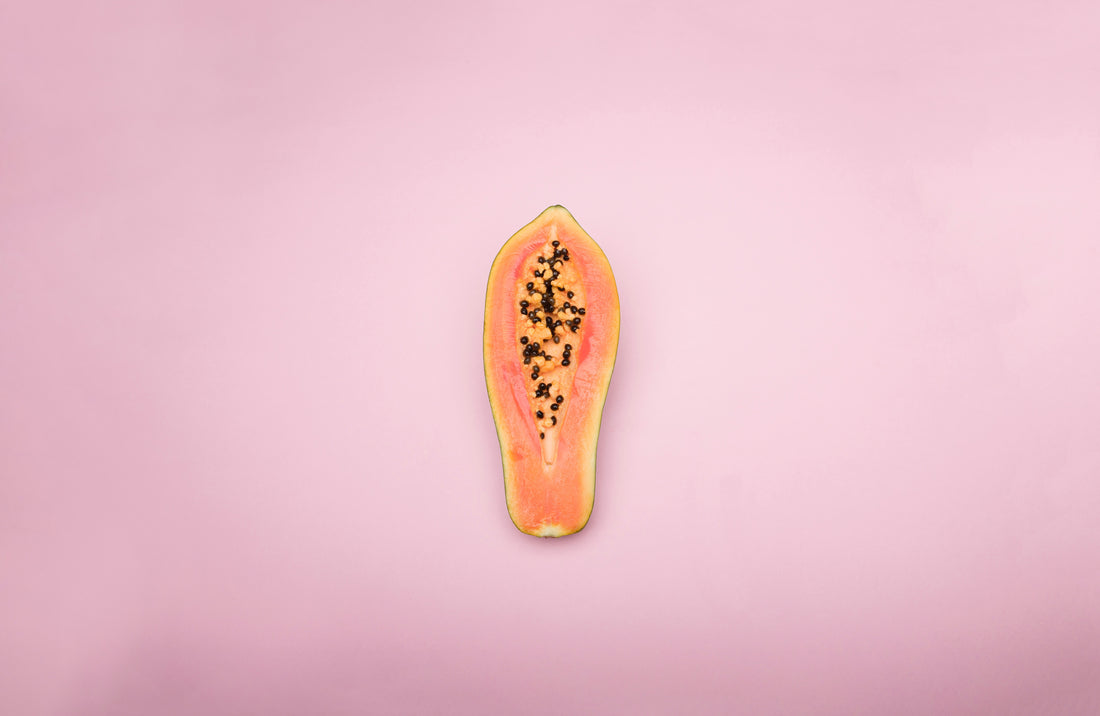
Here’s How You Can Keep Your Vagina Clean
Share
Feminine hygiene is not a topic you hear a lot about, which is not surprising given the silence around women’s health issues, including period pain. Feminine hygiene is a problematic term in itself (but that’s a topic for another article).
Like any other part of your body, your vagina needs to be cleaned. Find out the top hygiene tips for women, including how to wash your vagina, so that you can keep your vagina healthy.
Let’s Talk Feminine Hygiene
Bacteria love warm, dark places, and guess what – that’s exactly the type of environment the vaginal area between your legs provides! Vaginal hygiene is important for anyone with a vagina, regardless of whether or not you’re of reproductive age, sexually active, or menstruating.
Female hygiene sometimes refers to period products such as sanitary pads or tampons. For this article, we’re defining feminine hygiene in terms of how to clean the vagina and the vulva (the outer part of the vagina, including the labia and the clitoris).
General Hygiene Tips for All the Women Out There

Photo by Deon Black on LetsTalkSex
The main reason to be intentional about feminine hygiene is to prevent vaginal infections. As anyone who has suffered a yeast infection or other type of vaginal infection knows, there are few things worse than having an itchy, burning sensation coming from your vaginal area. Here are a few indispensable hygiene tips for women for maintaining a clean vagina:
This may sound strange, but when was the last time you looked closely at your vagina? For far too many women, the answer is probably rarely or never. Every vagina is unique. Knowing what colours and smells are normal for your vaginal area will help you identify when something is amiss. So, grab a mirror and take a good look! Your feminine hygiene may depend on it.
The most important element of female hygiene is maintaining the right pH. A normal vaginal PH is slightly acidic, which protects the body by preventing unwanted bacteria and yeast from multiplying too quickly and causing infection. This delicate balance can be thrown off by anything that touches your vaginal area or even significant changes in your diet. AIMA’s CBD Suppository was tested to in vitro to prove that unlike competition, OVY keeps the normal Vaginal PH range, while others tent to neutralize it, causing BV and other infections.
Although there are plenty of vaginal cleanse products out there, be wary of what you choose. The vagina self-cleans, so it’s only the outside of the vagina you need to worry about. You don’t need anything more than gentle soap and water to ensure a clean vagina. Don’t overcomplicate things by using a douche. These devices can disrupt the natural balance of bacteria, cause irritation, and may lead to more serious health problems Jenkins and O’Doherty, 2022).
After you use the toilet (especially for a bowel movement), be sure to wipe from front to back. This can protect you from harmful bacteria in fecal matter that can cause problems in the vaginal area.
During intercourse, bacteria can get into the urethra. After sex, be sure to pee to flush out any stowaways and reduce your risk of contracting a urinary tract infection. It’s also good practice to wash your vagina with warm water after sex.
- Keep your vaginal area dry
A key part of vaginal hygiene is keeping the external area around your vagina dry to discourage bacteria from growing. Wear breathable, loose-fitting clothing and always change your underwear after a workout. Opt for cotton underwear rather than synthetic, as the former absorbs moisture.
How to Wash the Vaginal Area
A clean vagina is a healthy vagina, but do you know how to wash your vagina in a way that maintains vaginal PH? No matter which method you choose to maintain female hygiene, remember to be as gentle as possible on this sensitive area. If you’ve ever asked yourself, ‘what should I wash my vagina with?’, then read on to understand your options.
Mild Soap and Water
In keeping with one of the tips given above, sometimes simple really is better. Why spend money and time on unnecessary products when you can wash your vagina with good old warm water and gentle soap? Be sure to choose an unscented hypoallergenic soap to avoid irritation and do not wash inside your vagina (stick to the external area).
Vaginal Cleanse
Some women prefer to use a vaginal cleanse, which is a feminine hygiene product specifically designed to clean the external part of the vagina. These are designed with vaginal pH in mind and should be safe to use. Some vaginal cleanses claim to neutralize odours, but keep in mind that your natural odour is not something you should consider dirty or feel the need to hide!
Add OVY to Your Female Hygiene and Care Routine
Now that you know how to clean the vagina, let’s consider another aspect of feminine hygiene and care: addressing period discomfort. Although the gender pain gap has historically led to women’s pain being ignored, AIMA is determined to make untreated period pain a thing of the past.
About OVY
OVY is an exciting new option for relieving period discomfort by acting locally to provide fast, effective, and long-lasting relief. This CBD-enhanced vaginal suppository works by acting on the cannabinoid receptors that are naturally present in the female reproductive tract, allowing OVY to bypass the liver and provide effective relief. This amazing clinically tested product is water-based and is completely safe to use during sex or while menstruating.
Learn more about OVY and join us in breaking the silence around period pain, feminine hygiene, and other health issues faced by menstruators (#myperiodstory)!
